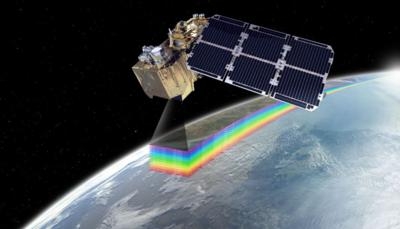Mon, Feb 01, 2016
Will Continue Mission Of The European Copernicus Program
The ESA has signed an contract with Airbus Defense and Space worth around 285 million euros (approx $309 million) to deliver two further optical satellites for the European Copernicus program.

As part of the Sentinel-2 Earth observation satellite system, these two new models, called “Sentinel-2C” and “Sentinel-2D”, will observe the environment and land surfaces and continue from 2021 with the measurements carried out by the first two flight units as part of the European Copernicus program. As prime contractor, Airbus Defense and Space will lead an industrial consortium of more than 50 companies from 17 European countries and the USA.
“ESA’s new order for the Copernicus satellites with by far the widest range of applications demonstrates the great confidence the agency has in our know-how,” said François Auque, Head of Space Systems. “Continuous high-quality data spanning several decades is essential for the large community of users. The delivery of the Sentinel-2C and -2D satellites will ensure this continuity, allowing the advanced monitoring of our environment and land usage to continue.”
The Sentinel-2 satellites deliver optical images from a height of 786 km with a resolution of 10, 20 and 60 meters at an image width of 290 km. These images are produced in 13 spectral bands, from the visible to the short-wave infrared range of the electromagnetic spectrum.
As part of Copernicus, the Sentinel-2 satellites make a significant contribution to meeting Earth observation data requirements in the areas of land use, water quality, agriculture and forestry, land management, natural disasters (floods, forest fires, landslides, erosion) and humanitarian aid. Environmental observation in coastal areas likewise forms part of these activities, as does glacier, ice and snow monitoring.
Sentinel-2 is also capable of using another ESA program, the European Data Relay System (EDRS). EDRS-SpaceDataHighway will be a network of laser communication payloads on geostationary satellites and low Earth orbit satellites. The system will provide secure and fast communication services for the Sentinel-1 and Sentinel-2 satellites. It will ensure the timely availability of data particularly for time-critical applications such as environmental monitoring, emergency response and security missions.
The first satellite of this family, Sentinel-2A, lifted off on 23 June 2015 on a Vega launcher from the European spaceport in Kourou, French Guiana and is now in service. To date, over 7,000 products are available for download, cumulating a total volume of 35 TB, while over 57,000 products equivalent to 276 TB have been downloaded by the user communities. Since mid-January a step increase in the download activity was observed, reaching a volume of 7 TB distributed daily. The development of Sentinel-2B is progressing in full swing for a launch late this year.
For Sentinel-2, Airbus Defense and Space in Friedrichshafen (Germany) is responsible for the system design, the platform and satellite integration and testing. Airbus Defense and Space in Toulouse (France) is delivering the Multispectral Instrument (MSI), while Airbus Defense and Space in Madrid (Spain) is responsible for the mechanical satellite structure for producing the thermal equipment and cable loom, and for the delivery of power, energy management and high speed data acquisition units.
(Image provided with Airbus Defense and Space news release)
More News
“While legendary World War II aircraft such as the Corsair and P-51 Mustang still were widely flown at the start of the Korean War in 1950, a new age of jets rapidly came to >[...]
Decision Altitude (DA) A specified altitude (mean sea level (MSL)) on an instrument approach procedure (ILS, GLS, vertically guided RNAV) at which the pilot must decide whether to >[...]
Aero Linx: National Aviation Safety Foundation (NASF) The National Aviation Safety Foundation is a support group whose objective is to enhance aviation safety through educational p>[...]
Also: Cal Poly Aviation Club, $$un Country, Arkansas Aviation Academy, Teamsters Local 2118 In response to two recent general aviation accidents that made national headlines, more >[...]
“The FAA is tasked with ensuring our skies are safe, and they do a great job at it, but there is something about the system that is holding up the medical process. Obviously,>[...]
 Aero-News: Quote of the Day (04.28.25)
Aero-News: Quote of the Day (04.28.25) ANN's Daily Aero-Term (04.28.25): Decision Altitude (DA)
ANN's Daily Aero-Term (04.28.25): Decision Altitude (DA) ANN's Daily Aero-Linx (04.28.25)
ANN's Daily Aero-Linx (04.28.25) Airborne-Flight Training 04.24.25: GA Refocused, Seminole/Epic, WestJet v TFWP
Airborne-Flight Training 04.24.25: GA Refocused, Seminole/Epic, WestJet v TFWP Aero-News: Quote of the Day (04.29.25)
Aero-News: Quote of the Day (04.29.25)



